Reverie carbon race bucket into S2000: The Ultimate 'get-low' seat
07.25.2016If you're tall and own an S2000 (or have considered buying one), you know that finding a comfortable and appropriate seating position is a serious challenge. The cockpit is extremely narrow, with scarce room for knees or elbows. The steering wheel doesn't have any rake or telescoping adjustment, and the OEM seats sit rather high and have considerable padding. There are an array of concerns that arise from these features.
We Have Issues
Rollover protection
The S2000 comes with reinforced A-pillars and integrated roll hoops located underneath the plastic covers behind both seats, but the bars themselves actually sit an inch or so lower than the plastic covers. Unfortunately, if you're over six feet tall and using the OEM seats, your head is going to sit considerably higher than the tops of those roll hoops. If you put a helmet on, the situation only gets worse. While there's obviously no guarantee that those hoops will save your bacon in an incident, it's nice to know that if you're seated below them there's at least a chance they'll come into play. All of that said, if I was going to drive this car on the track, I would at minimum install a proper aftermarket roll bar, and preferably a complete cage.
Knee Room
With the OEM seat pushed all the way back, my knees were still far too close to my hands and the steering wheel. I had to bow my legs out as far as they'd go to either side, and there isn't much room to do so without hitting the door and the center tunnel. My knuckles still brushed my knees when turning the wheel. That means the only direction for the knees to go is up and into the steering wheel, which isn't a good recipe for smooth counter-steering!
Visibility
With the OEM seats, it was sometimes difficult to see through/past the top of the windshield. Traffic lights, birds, or passing Zeppelins were often obscured by the sun visors, and the top of the gauge cluster was barely visible through the top edge of the steering wheel. If I went to an smaller diameter aftermarket wheel, it would be even more difficult to see the gauges.
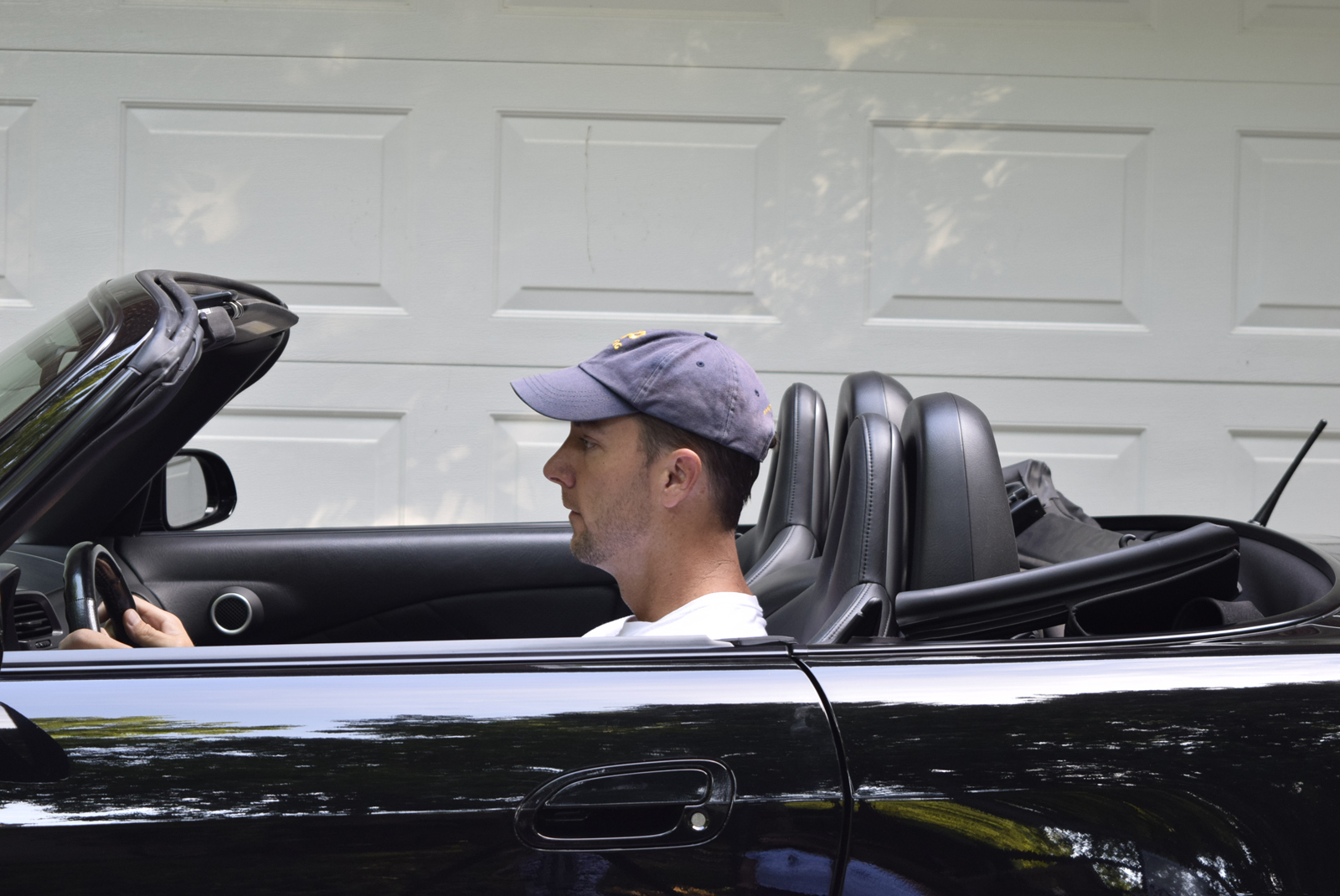
How do we Get Down?
"Getting low" is one of the first priorities for tall S2000 drivers. Some attempt to do so by modifying their OEM seat by removing padding (foamectomy), modifying the mounting bracket/slider, or wailing on the seat pan with a hammer to push it towards the floor. Given my height and desire for increased lateral support and weight reduction, I decided that an aftermarket seat was my preferred option. Since there are roughly 738 different aftermarket seats out there and waiting to be purchased, one would think that finding the correct seat shouldn't be too difficult. Wrong!
The primary issue with installing aftermarket seats in the S2000 is that most of them are too wide in the hip region, the shoulder area, or in both. The shoulder area is particularly problematic on this car. The S2000 'glove box' is a fold-down storage area above the tunnel, next to the driver's right shoulder and elbow. A seat with wide shoulder wings will either partially or completely block the door to that compartment, which is a problem for many people since there really isn't any other storage space in the passenger compartment. A seat that is wide at the top will also potentially rub on the panel next to the driver's left shoulder, wearing either the panel, the seat, or both.
As I browsed through seat options both online and in person, I couldn't seem to find a seat that had everything I wanted. Some were narrow at the top, but too wide at the bottom. Others cleared the center console at the top, but were so narrow at the bottom that anyone with a waist bigger than 30" would have a tough time squeezing into them (mine is 33"). Some seats would be heavier than stock when attached to the mounting bracket, while others didn't appear to be of very good quality. After considerable research, I felt like Goldilocks searching for the one that was juuuust right.
Finally I stumbled onto a solution via our buddy Patrick Urgento at Urge Designs. Patrick is built like myself, with limbs that take up a considerable amount of real estate. He assured me that the seat he installed in his personal car, the Reverie Super Sports B, would be a great solution. The Sports B is a carbon fiber bucket manufactured by Reverie in the UK. It is an FIA approved, single skin carbon fiber bucket tipping the scales at a feathery 9.25 lbs. Its main application appears to be various iterations of the Lotus Elise and Exige. The seat is completely covered with a very thin layer of padding and a nice weaved cover. It has provisions for a five or six point harness, and it's compatible with a Hans Device. While I can't take credit for discovering it (thanks Patrick!), to my knowledge I'm the first to document its use in the Honda S2000.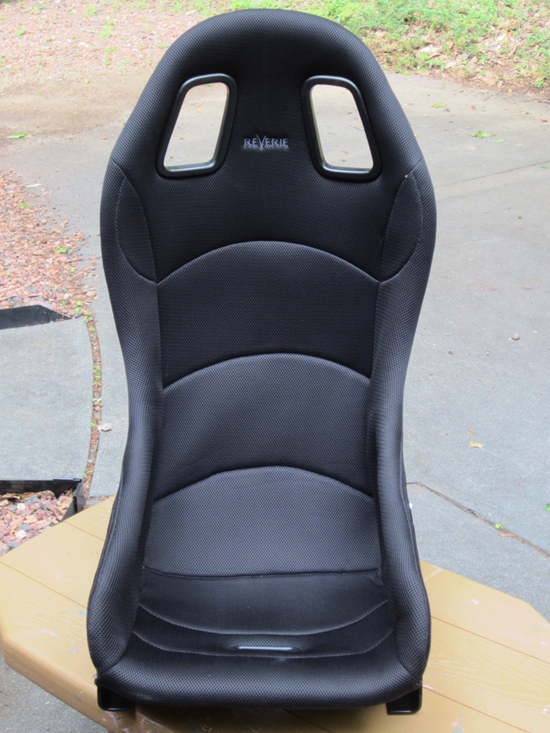
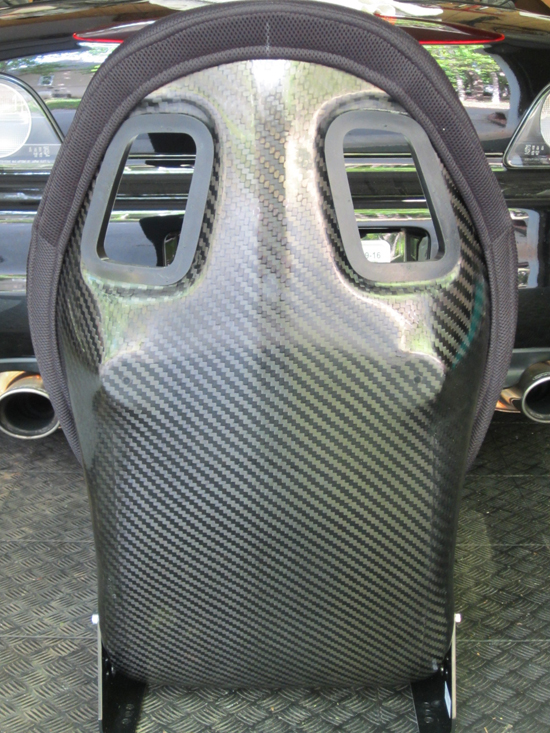
Installation
If you've ever installed an aftermarket seat in a road car, you understand what is typically involved (cutting, sawing, bending, cursing, and bleeding). Having done so four previous times in my Integra Type R, 350Z, C5 Z06, and Miata, I thought it might be easier on my fifth trip to this ish show. Wrong again! The problem with every production car is that they're all different. The shape and layout of the floor pan, the shape and height of the center tunnel, belt mounting locations, the angle of rear bulkhead...the list goes on. That means every seat install is somewhat of a custom affair. In this case, the biggest problem was how tight everything fit together. I had to basically assemble the mount and seat in the car from the floor-up, rather than assembling everything outside the car and dropping it in.
I started out with a trusty Wedge Engineering base mount. I've used their products a couple of times in the past, and I've been pleased with the quality of their offerings. For the rails to attach to the base mount, I was able to re-purpose the billet aluminum units that were in my C5Z. I fortunately had an outstanding engineer and a CNC mill on my side, so with a few modifications I was able to make all of the holes line up. I won't go into too many details on the mounting, but I will say that the Reverie Sports B should fit on most common seat rails. I initially tried using a standard Sabelt mount, but thought I could get the seat back a bit further and down a little lower with the other rails I had. Since I wasn't concerned about anyone else driving my car, I mounted my seat in a fixed position and didn't have to worry about sliders. I'm guessing they'd add 1/2" to an 1" in overall height if they were installed. Below is the seat attached to the Sabelt mount (part#Z20005B for reference).
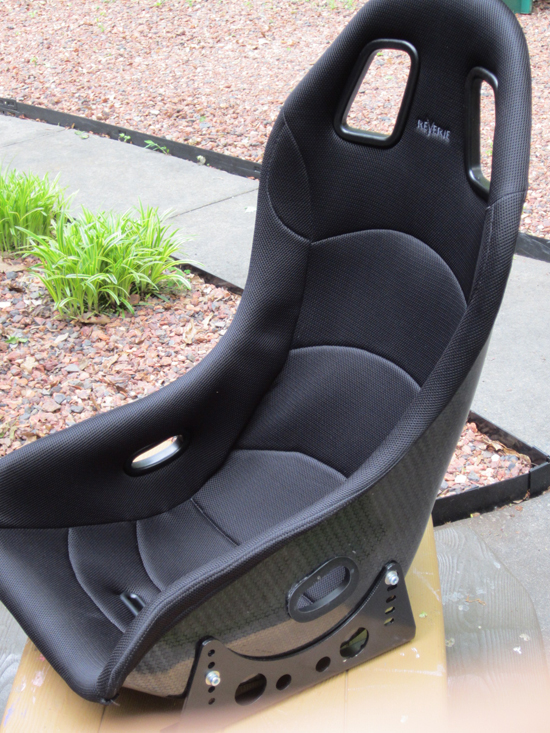
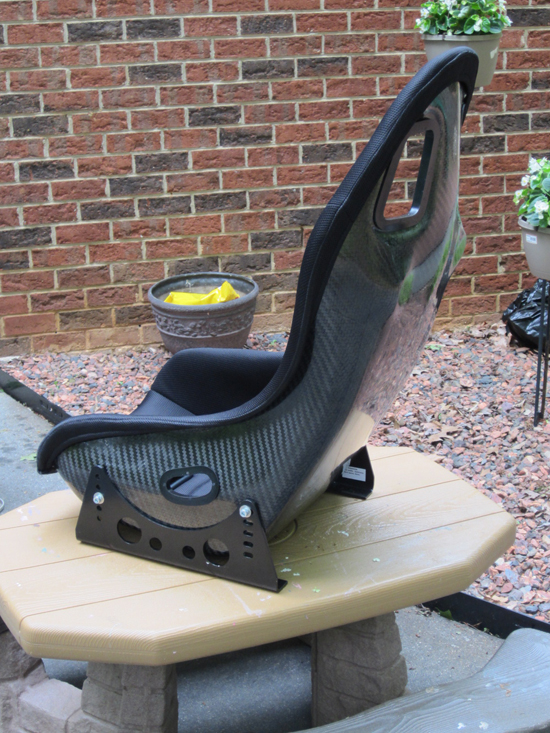
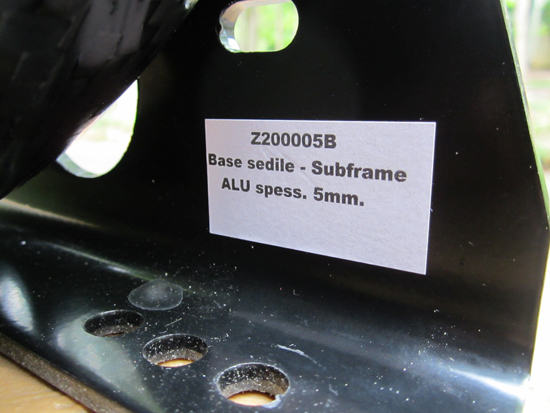
Here is a shot of the final product (the blue painters tape was to protect the seat from scratches during install):
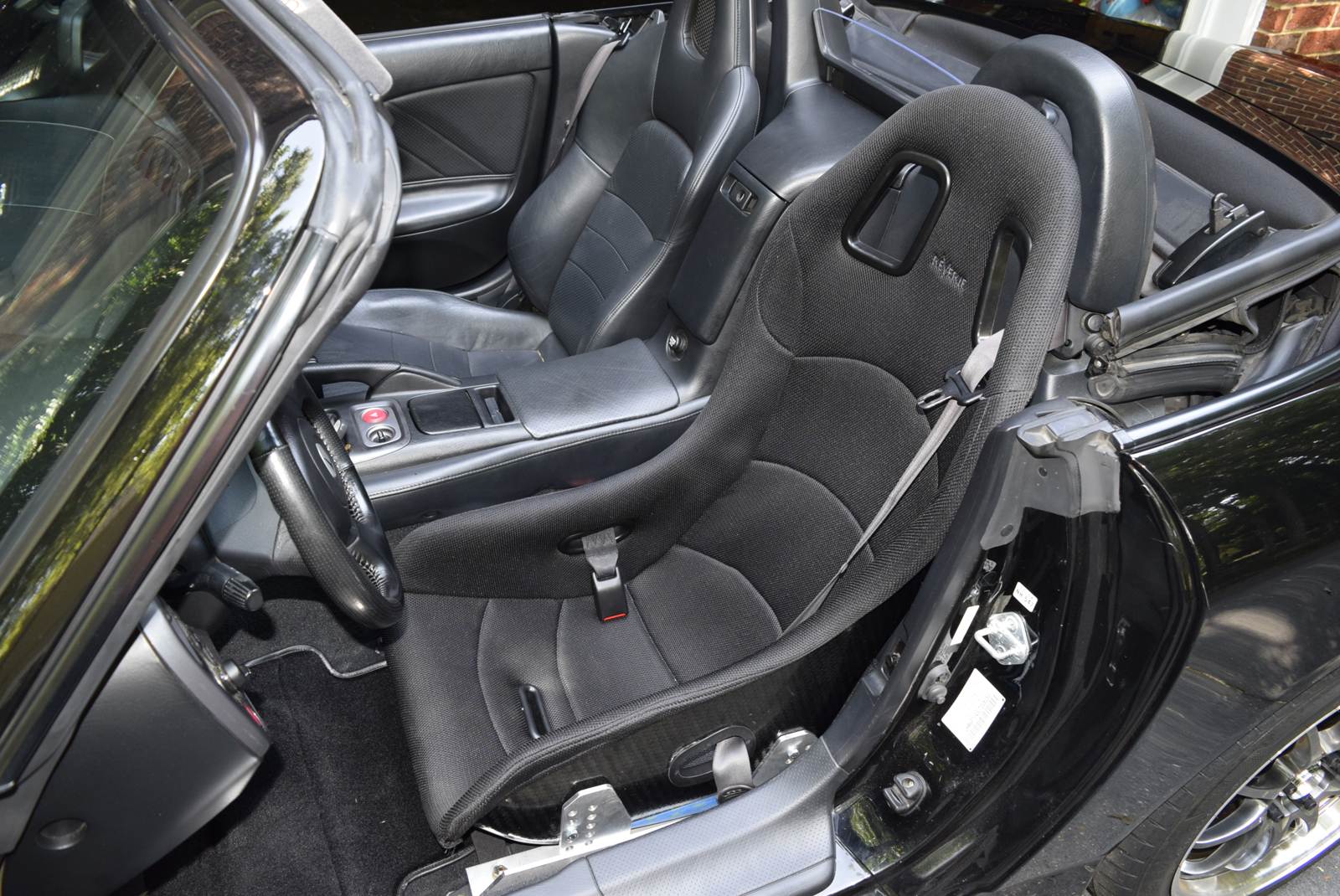
Here's a bird's eye view. I installed the seat with the front pointed ever-so-slightly to the right. The seat bolsters in the thigh area are fairly aggressive, and don't give you a ton of room to spread your legs. I played around with mounting it dead square vs. pointed a little bit to the right, but angled slightly was a tiny bit more comfortable for my right thigh.
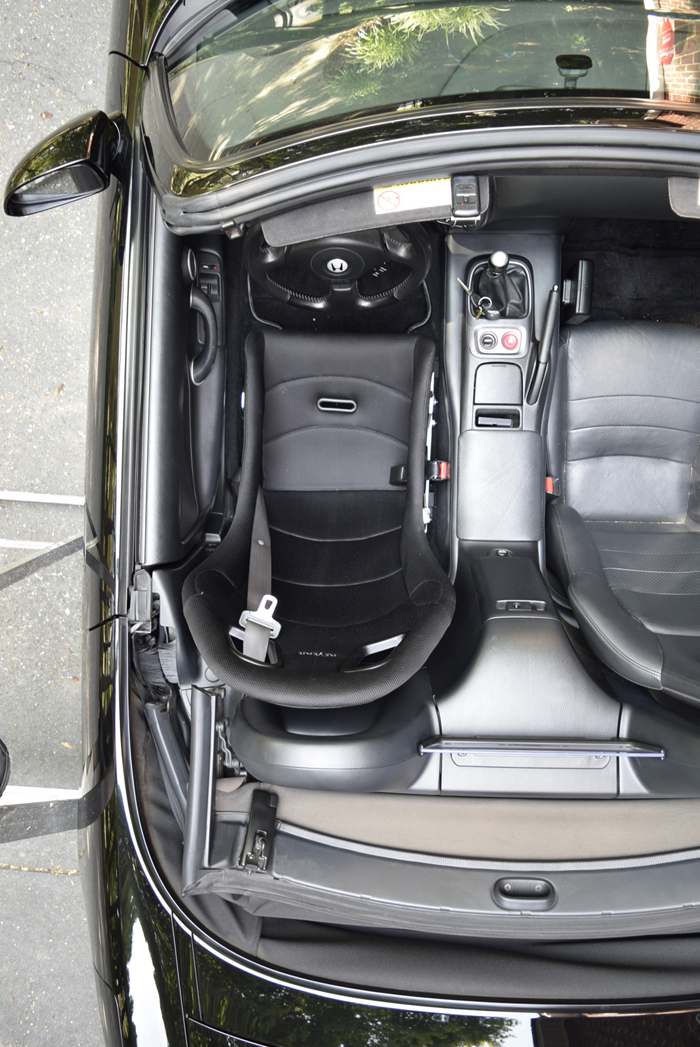
Below is a closeup of the mounting on the driver's side.
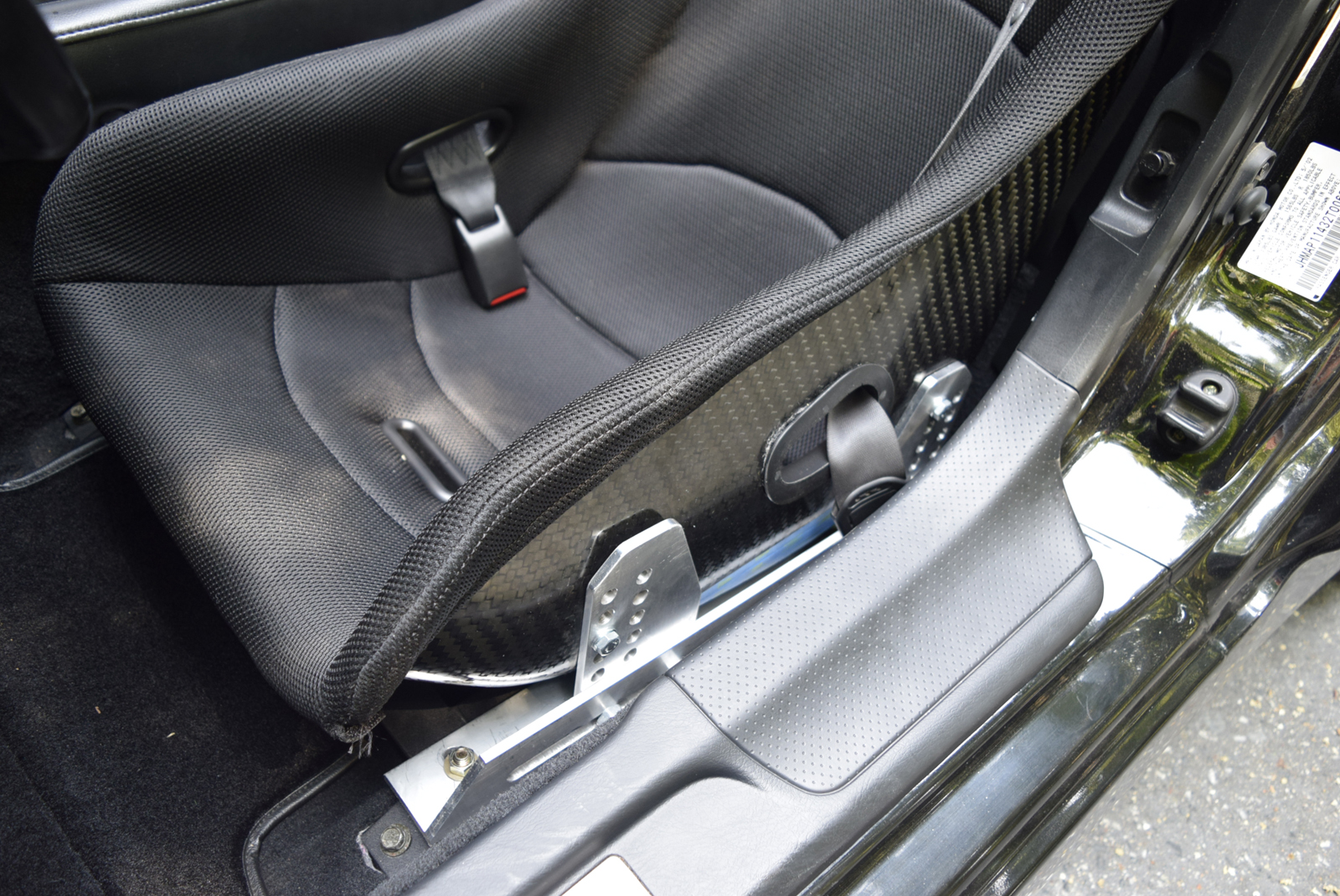
Below is what it looks like on the tunnel side. I fortunately had plenty of room for the OEM seat belt receiver. It bolts directly to the Wedge Engineering bracket, and they had a nice spot already set for it. I used a seat belt extender to position the lap belt. It sits nicely on my hip, and isn't pulling up into my stomach.
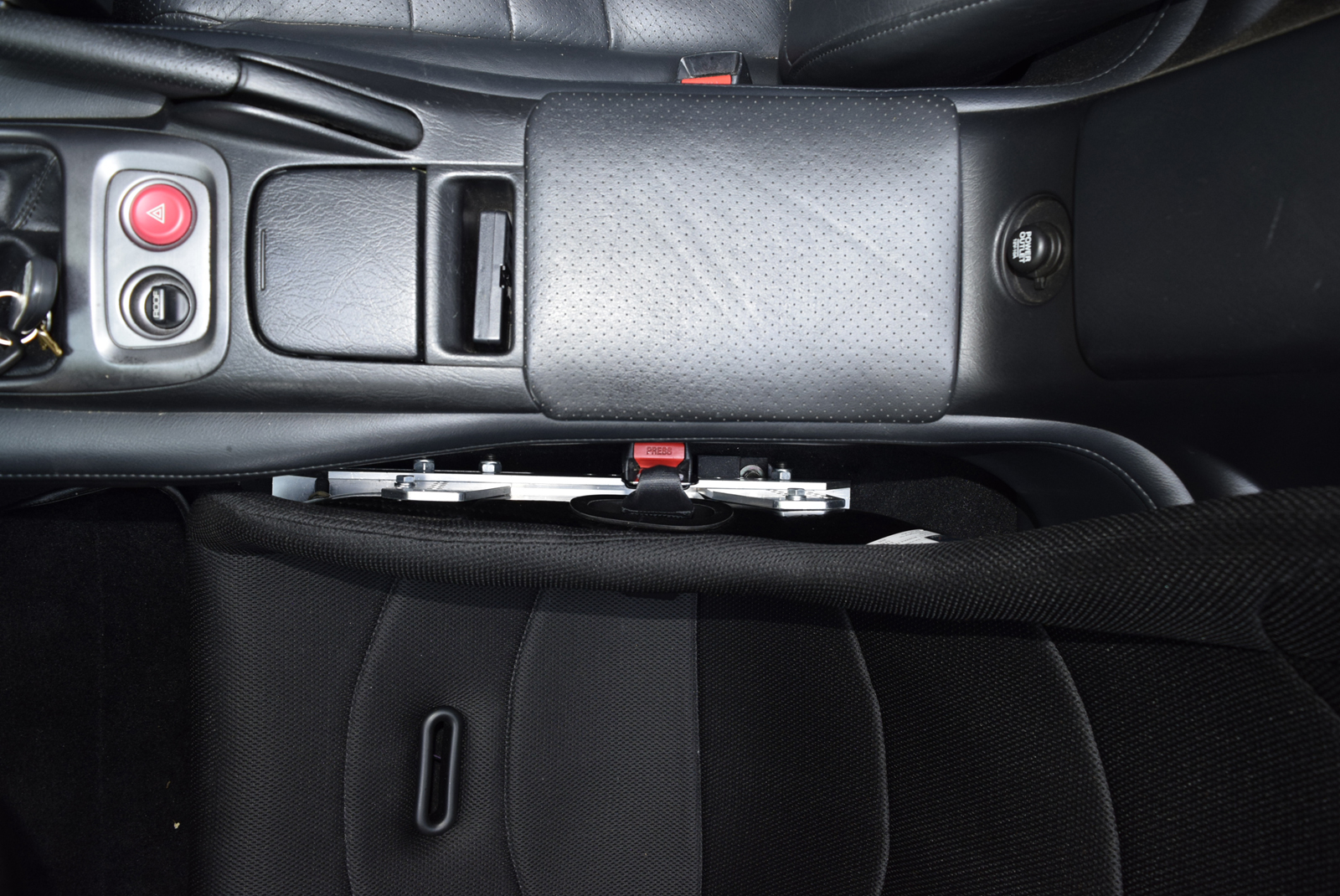
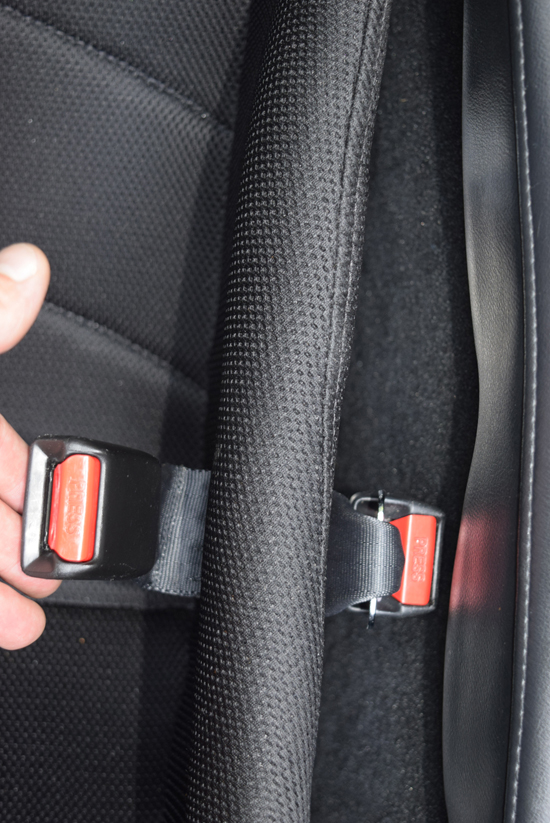
The left wing of the seat barely touches the door panel. If I had installed the seat dead straight towards the front of the car, it wouldn't touch at all. I don't expect any substantial rubbing or wear on either the panel or seat. As a precaution I took out the little snap that's used to hold the tonneau cover in place. One of the really nice features of the Reverie are the large belt openings. In addition to working with a Hans Device, they allow the factory shoulder belt to easily come through without being pulled or placed on a weird angle. That means they're not choking me or digging into my neck when I'm buckled in. In my experience that's more the exception than the norm with an aftermarket seat install.
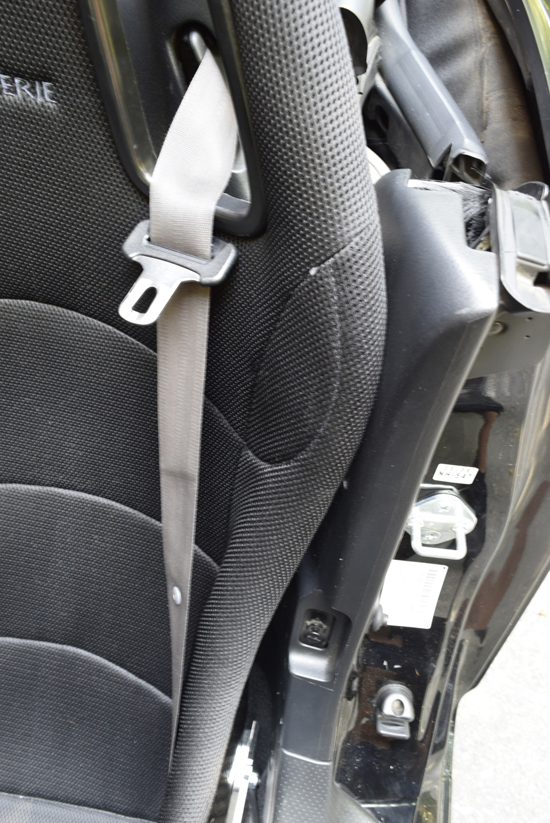
The shoulder on the tunnel side has tons of clearance. It's not even close to interfering with the glove box door.
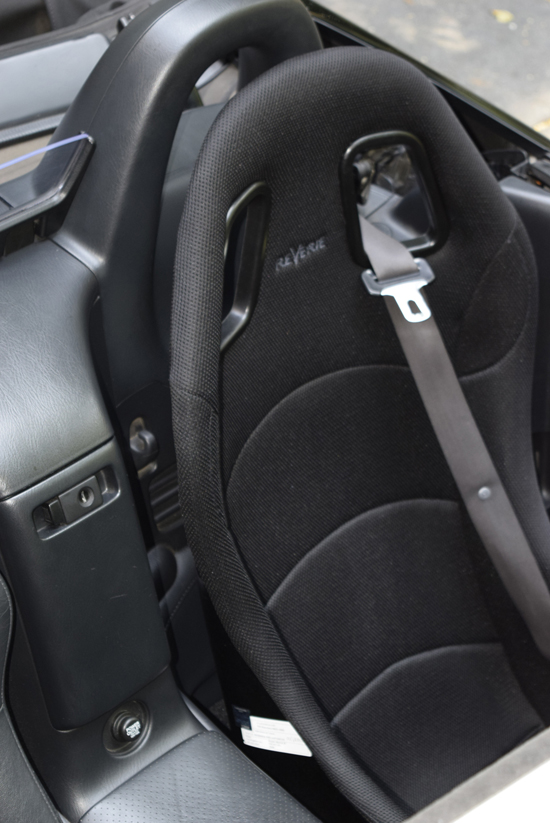
The seat doesn't touch anything in the rear. It follows the curve of the rear bulkhead down to the floor with a little room to spare.
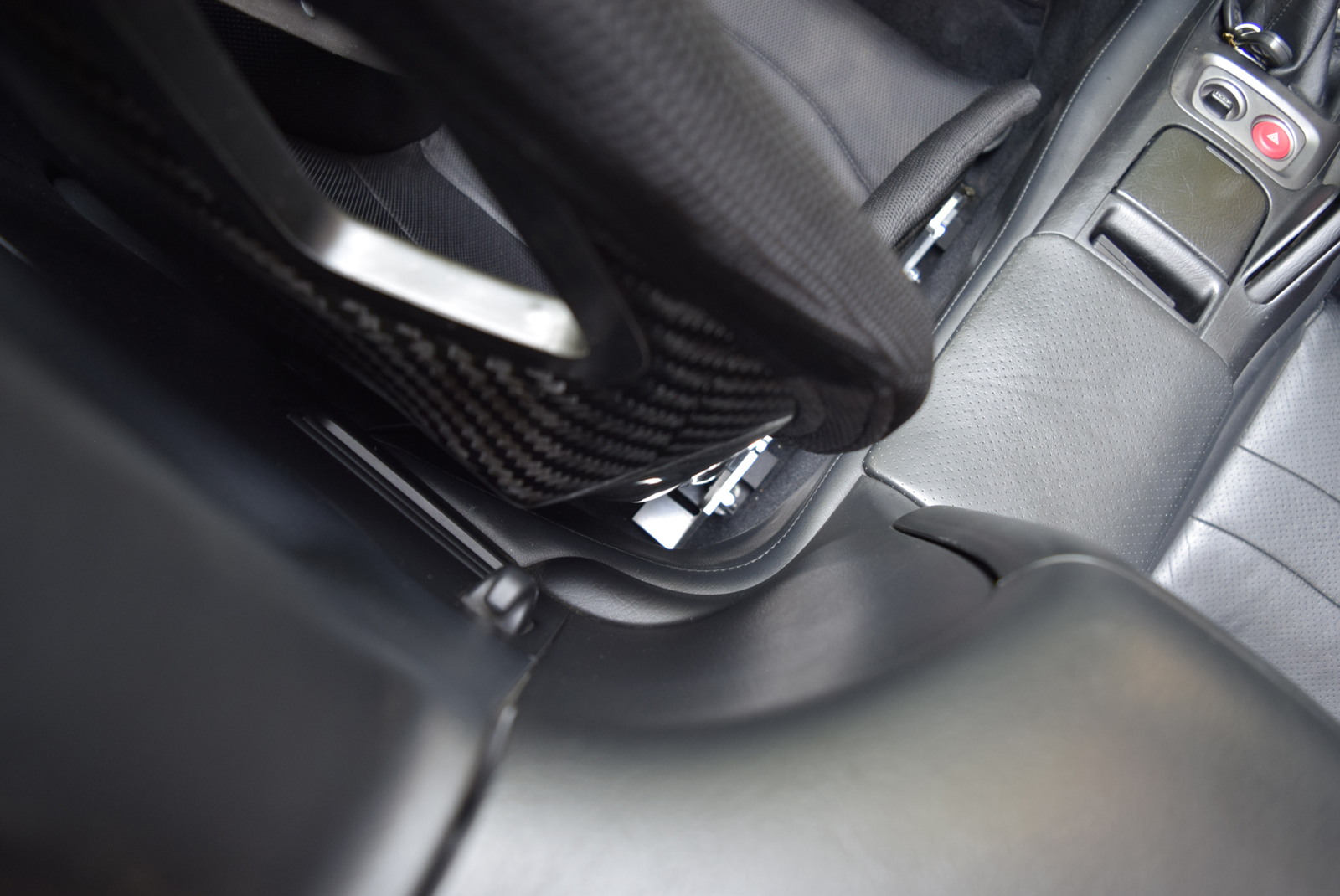
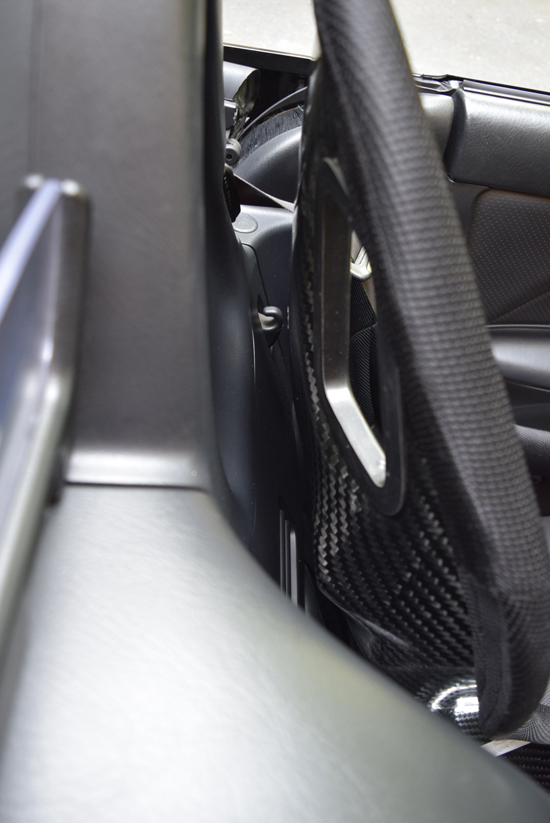
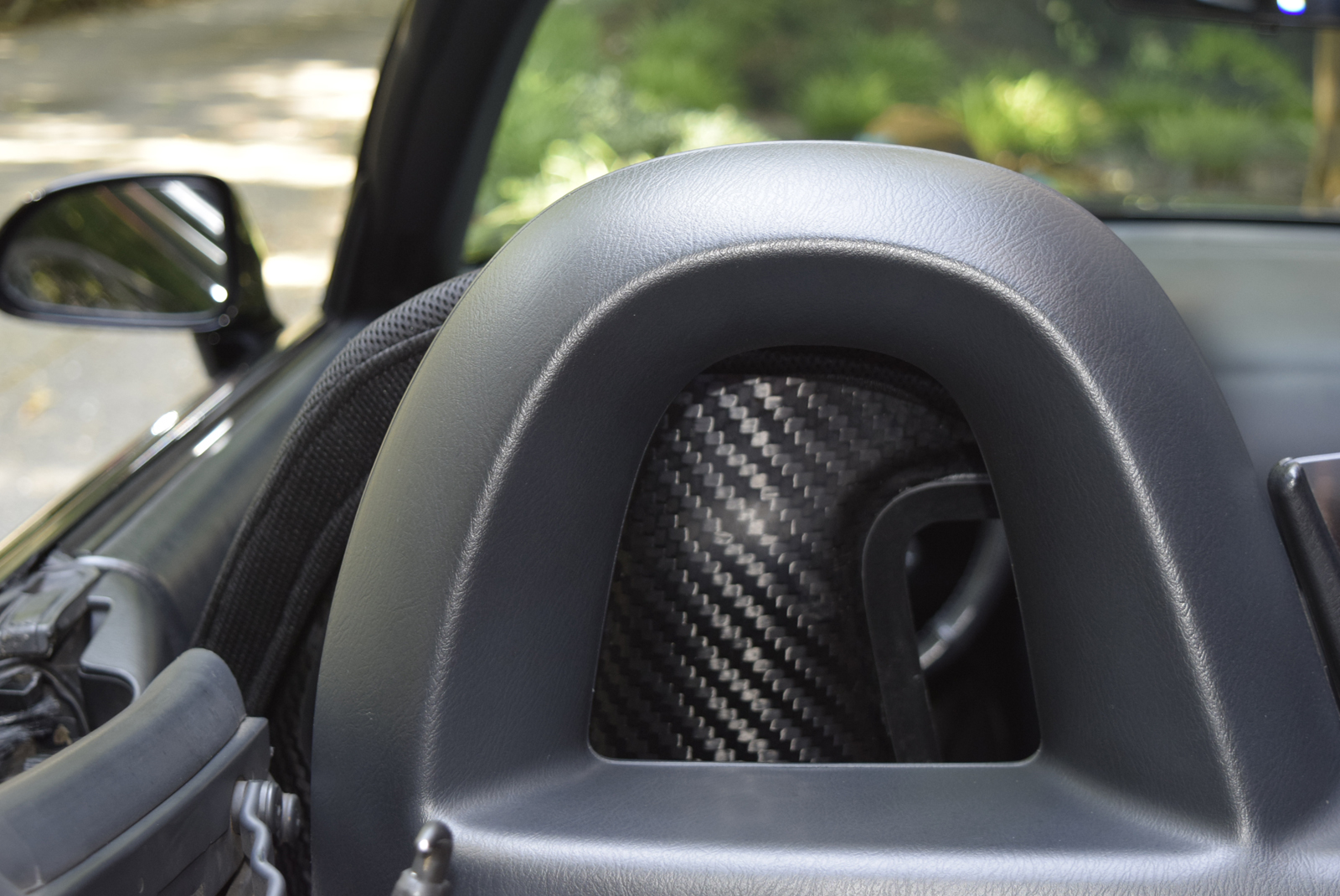
Results...Please
I knew my new seat was going to lower me a couple inches, but I was shocked at just how much I dropped! I'd estimate that I'm now sitting roughly four inches lower in the car. Below are some before and after shots from two different angles.
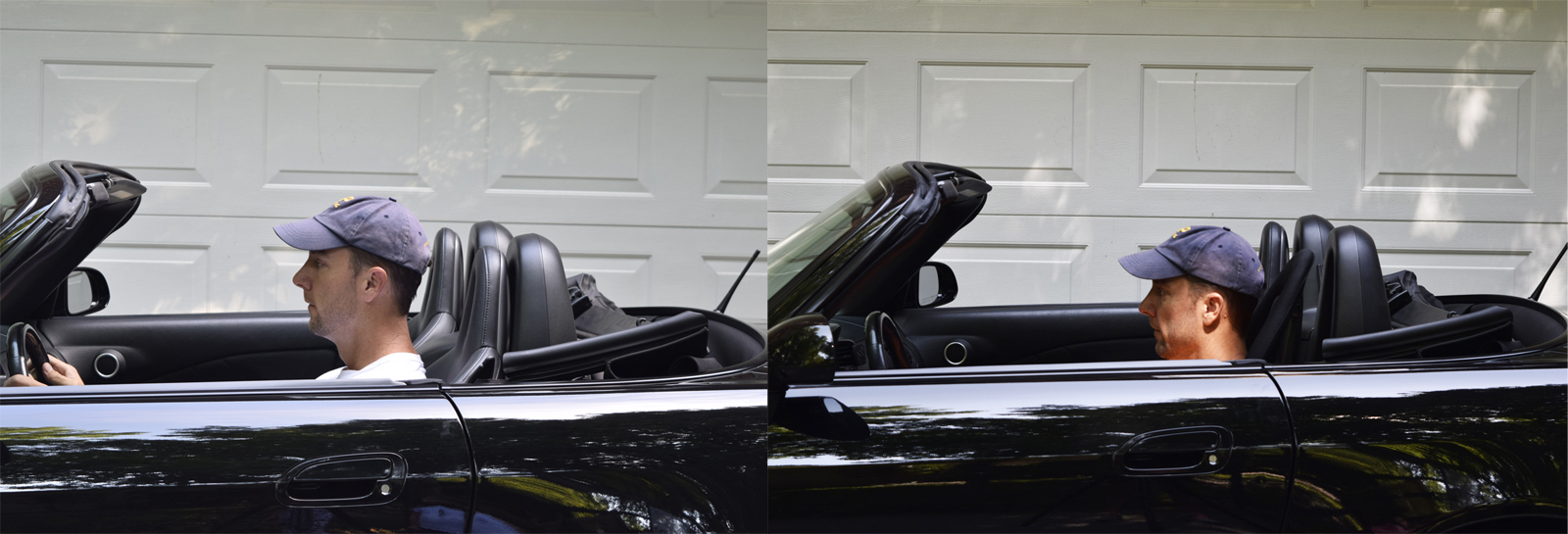
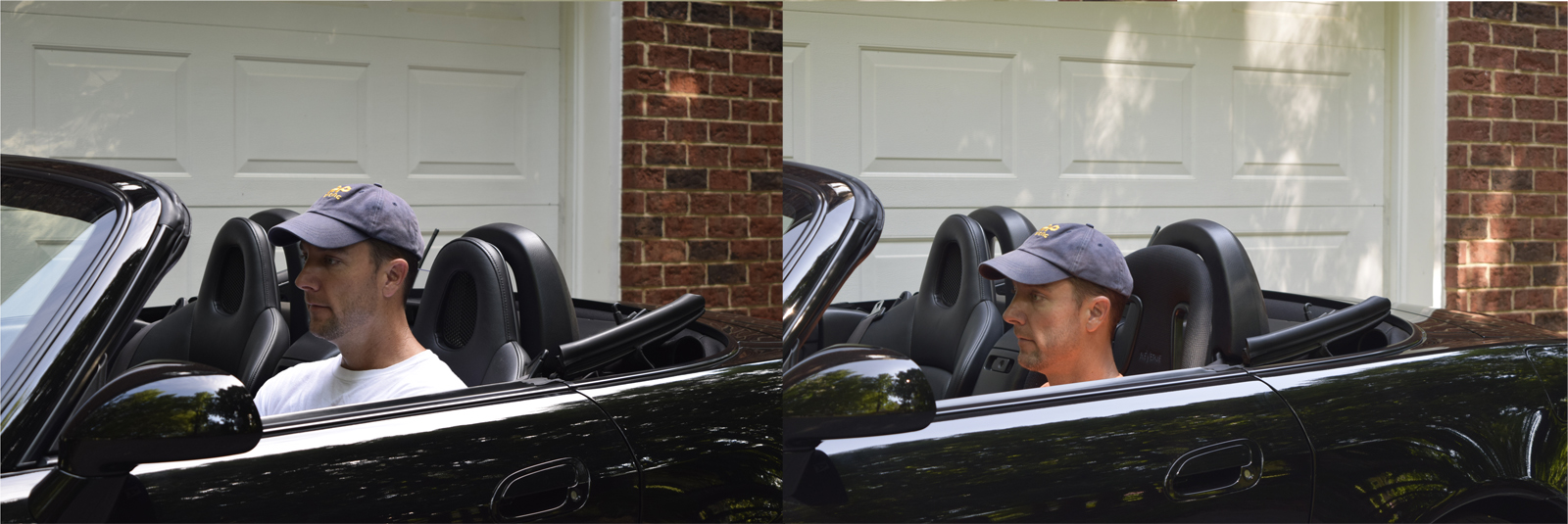
I weighed everything on my digital scale, and the weight breakdown was as follows:
- OEM seat and mount= 32 lbs.
- Reverie Super Sports B= 9.3 lbs.
- Wedge base mount, rails, and hardware= 11.2 lbs.
- Reverie seat with mount and all hardware= 20.5 lbs.
Total weight savings vs. stock= 11.5 lbs.
Unfortunately the car still isn't as light as the little blue Miata in the background, but it's one baby step closer.
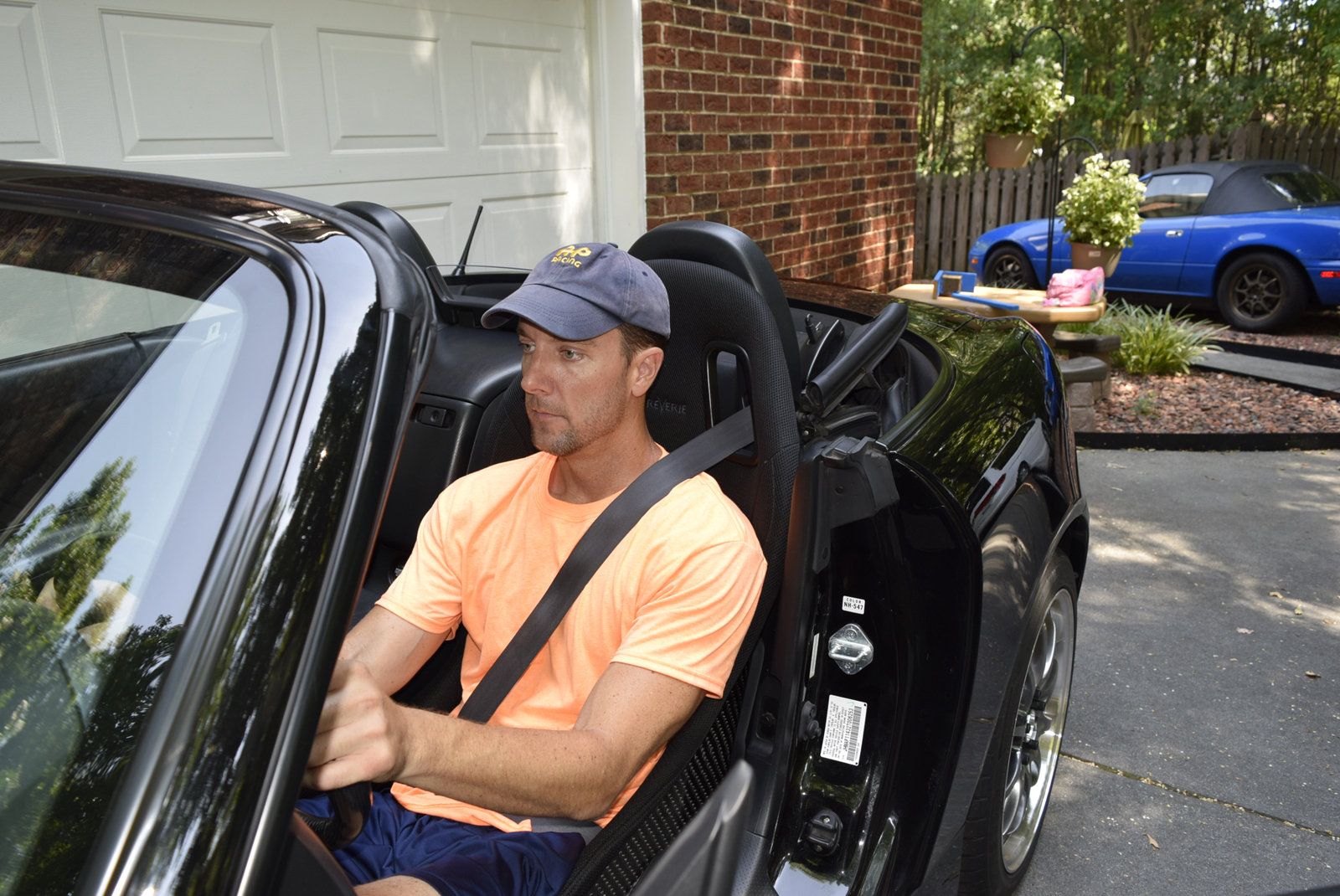
Other Thoughts
I'm very pleased with my seat choice. I browsed through a lot of potential candidates, but none seemed to offer all of the benefits of this Reverie. It fits in the car like one of the tiny Japanese-spec seats, yet still offers enough space for a large body. I now feel like I'm sitting in the car, rather than flopping around on top of it. The bolsters are narrow, but I still have some wiggle room (for the record I'm 6'3", 187 lbs., 34" inseam, 33" waist). The bolstering is aggressive enough that I'm not really moving around at all, even without a full harness. The angle/curve of the seat is nice, and feels comfortable on my lower back. I don't expect to take any long trips in the car, so I won't be able to report on long-distance comfort. The padding is adequate, but doesn't numb the feedback from my butt-dyno. The cover looks durable, and hopefully it will wear well over the long haul. The carbon work and overall construction of the seat looks fantastic.
The only thing I'm still not thrilled about is the steering wheel. As you can see in the pic above, I still have to extend my arms further than I'd like to hold the wheel properly. I prefer to have a bit more bend in my elbows, and the problem would be exacerbated if my shoulders were pinned down by a harness. I was hoping to avoid an aftermarket steering wheel so I could retain the airbag, but I may just have to go that route. The goal would be to move the steering wheel closer to my chest by maybe 2". That would give me more leverage on the wheel while freeing up some additional space for my knees. A 330mm, flat-bottom wheel, coupled with a quick release would probably do wonders for the overall driving experience.
Bonus Silliness
Below is a pic my guys put together when I first bought my car. They were all begging me to go with a personalized plate that read, "2SOONJR". :p
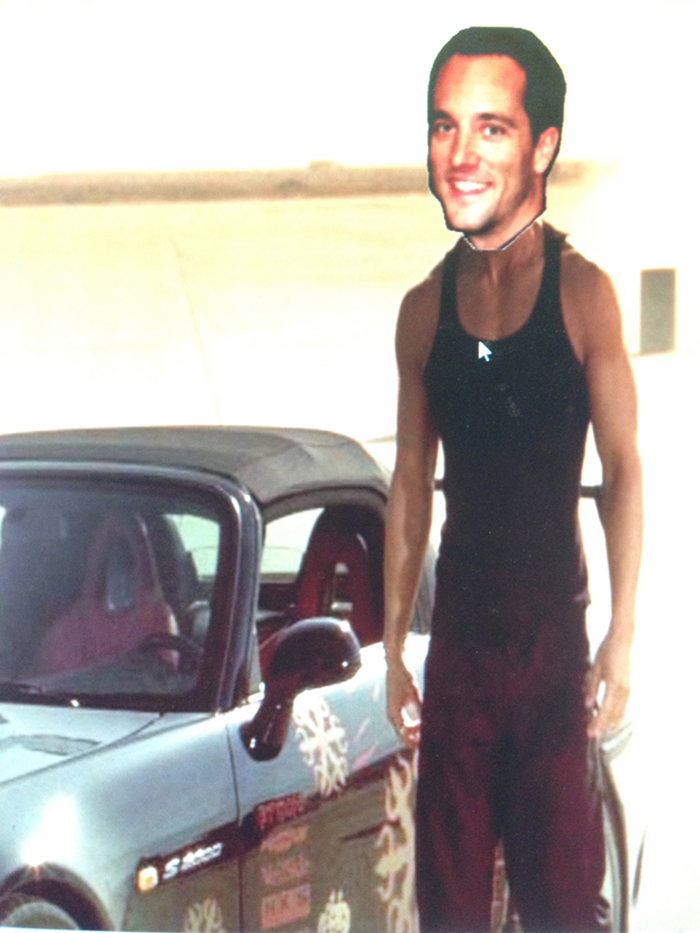





Customer Comments:
No comments posted yet
You must be logged in to leave a Comment